BACK TO WEATHER-BLOG MENU
New! Fine Art Prints & digital images for sale-
Welsh Weather & Dyfi Valley landscapes Slide-Library - Click HERE
Still getting to grips with the long zoom. One afternoon I returned to the Cors Dyfi reserve and practiced on the redpolls and siskins again. Although the close range might seem to make life easy, getting a good shot is surprisingly difficult with them on the move constantly. The shot below was typical of a situation that could have led to a really neat photo - if the birds all got into the right place and then kept still for a while!
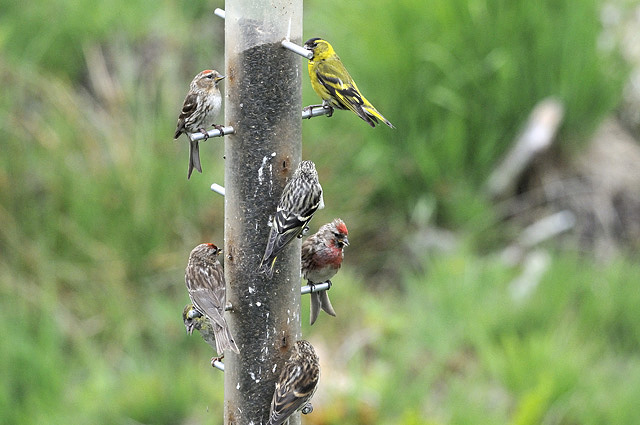
I'll carry on with these colourful subjects though over the coming year. In theory at least, I should get a decent shot at some point....
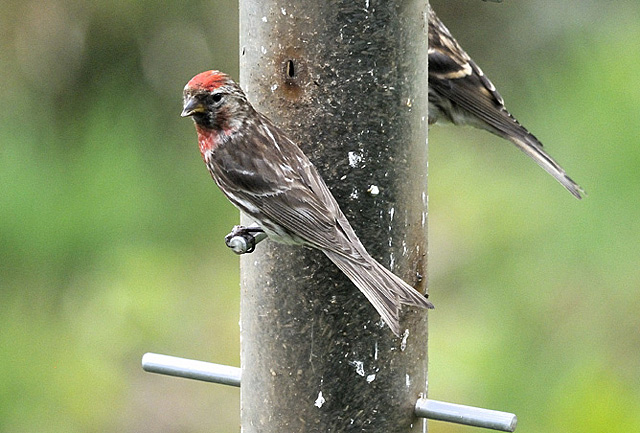
This greenfinch was a little more obliging....
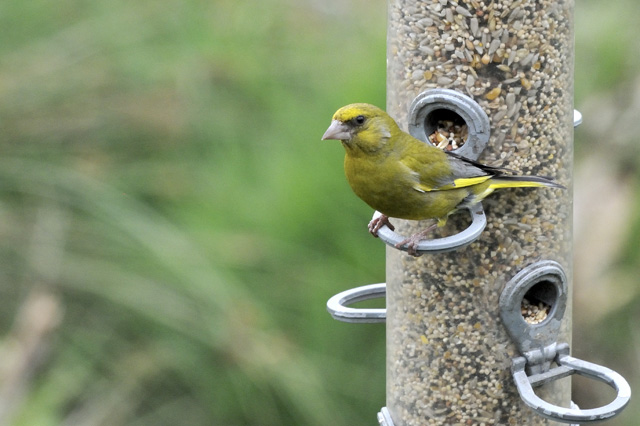
...before one of the local tree-rats turned up to monopolise the food situation! Looking for a change of venue I made my way down to Ynyslas Dunes....
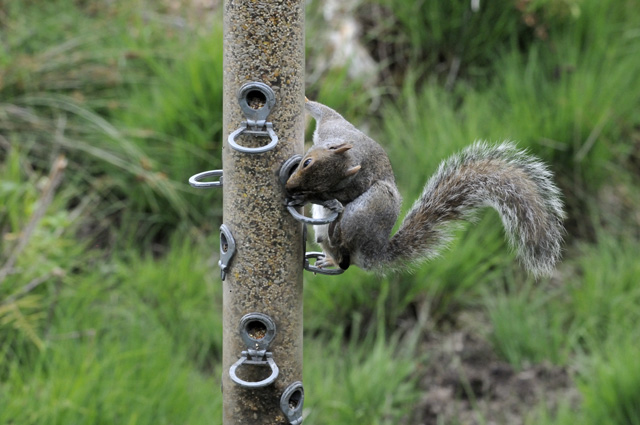
Walking across the golf-course path, the first "miss" occurred when I encountered a basking adder only a few feet away but as luck had it the cameras were zipped up in their cases and by the time I'd grabbed one it had slithered off into the long grass. Into the dunes themselves, wheatears were in evidence but getting close enough was really challenging - the shot below is a digital crop. More practice required....
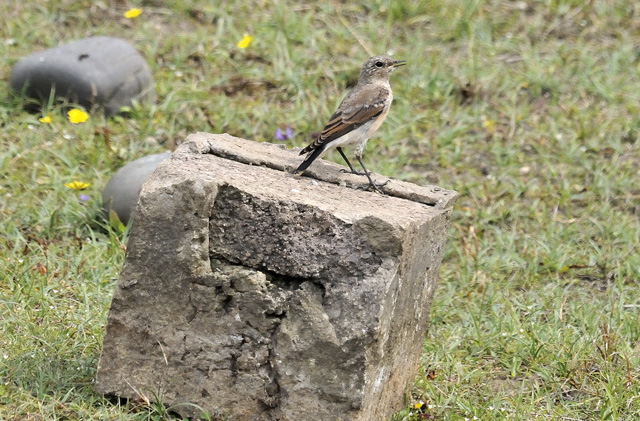
I stopped off at Glandyfi on the way home to have a go at the waders from the newly-widened road, which includes a pavement and a wall to lean on - unfortunately the powers-that-be in their infinite wisdom built much of it too high for many people to see over! I was in luck as the little egrets were there, distant at first but then stalking their way around a bank of muddy sand on my side of the river: firstly two....
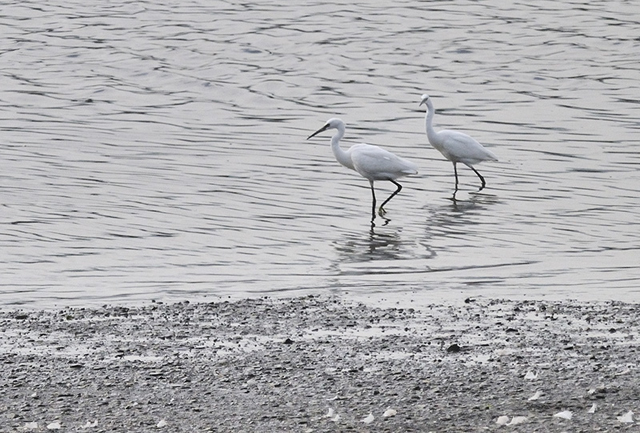
...then a third one joined them as they came much closer...
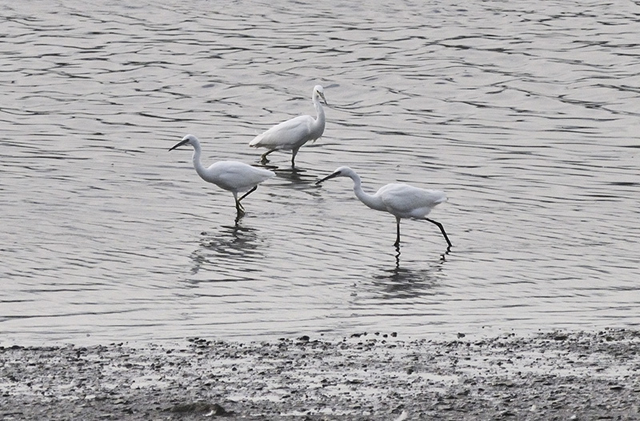
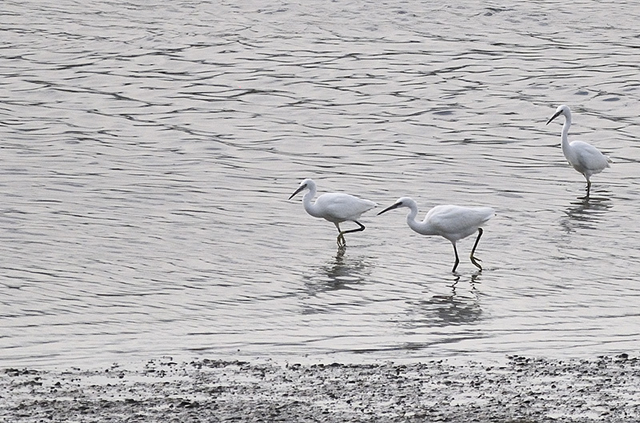
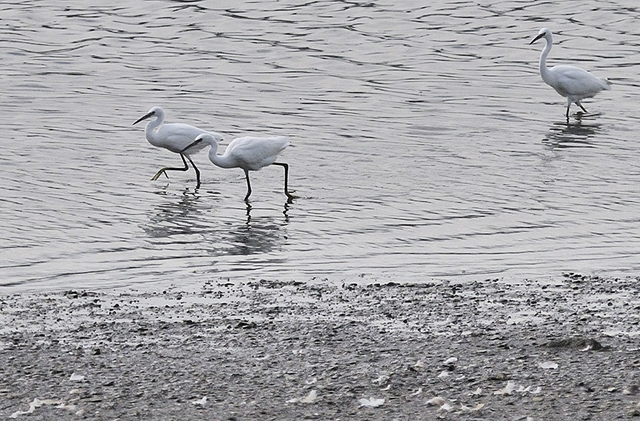
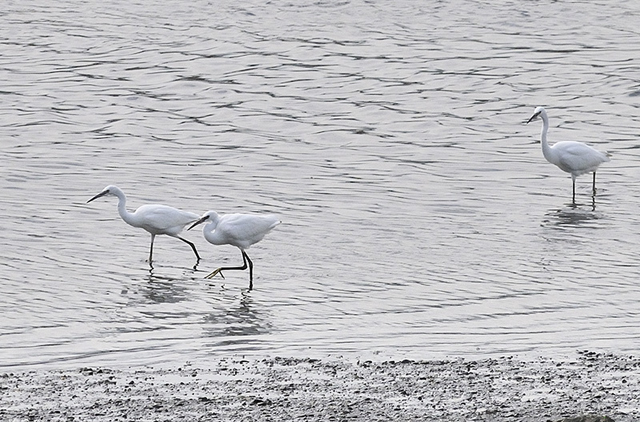
I was quite pleased with those and will definitely be back, although the last few stop-offs there have only seen the resident and overly-large flocks of Canada geese. I'm taking the longer lens out on routine trips too, just in case: one morning I got this one of a starling and a lamb up in the hills - the light unfortunately was not fantastic...
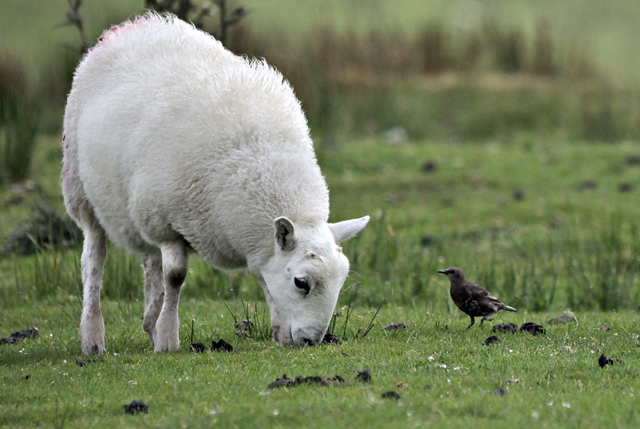
Long landscape-shots are another interesting possibility and one day I headed up onto some high ground a mile S of Machynlleth to see what was possible. I was starting to learn about the characteristics of the lens, regarded by many photographers to be at its best up to about 400mm, with a fall-off in sharpness at longer focal lengths. This shot of Machynlleth was taken at 350mm:
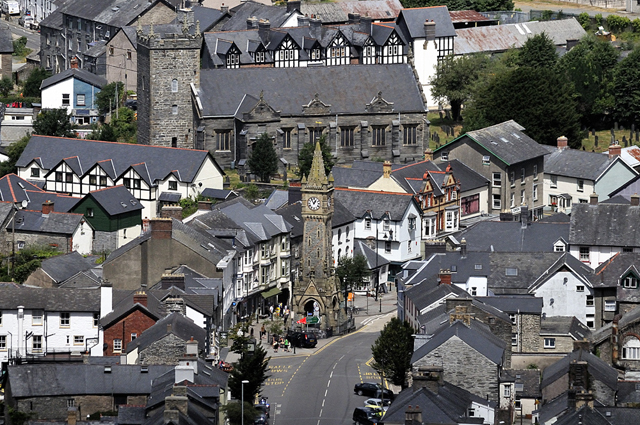
That's pretty sharp for a handheld shot from a mile away in summer. Screengrab of the shot zoomed-in on my computer screen below:
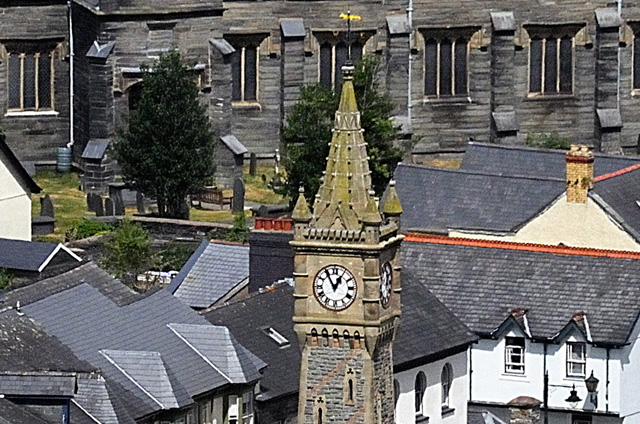
At 500mm (below) there is some loss of sharpness, although a tripod would likely rectify that to an extent. However, the composition of the 350mm shot is more pleasing, with the church not cut in half...
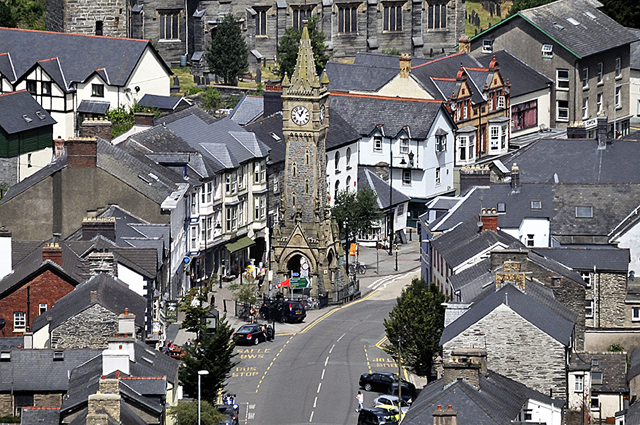
Here's a 500mm zoom of another well-known local view - Barmouth from Cregennen. In this case the distance is several miles so heat-shimmer and atmospheric moisture would have more of an effect...
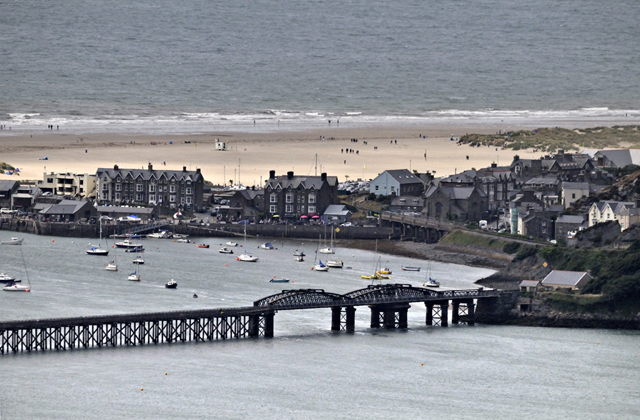
Zooming out to about 250mm adds a bit of useful foreground....
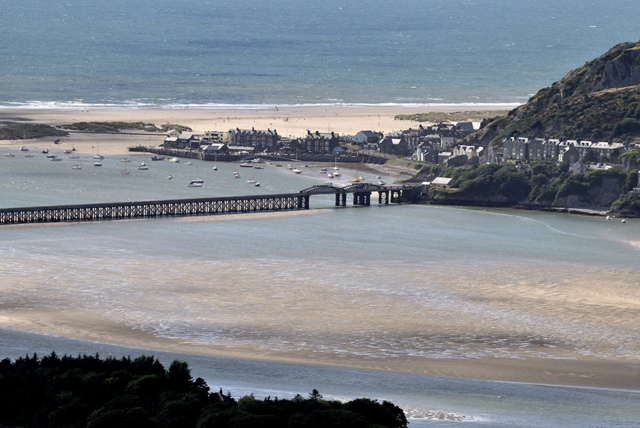
This is the Mynydd Cemmaes windfarm from the Machynlleth-Llanidloes Mountain Road. I'm looking forward to experimenting more with the lens during the coming winter, when clearer and crisper skies make long-range work like this a better proposition.
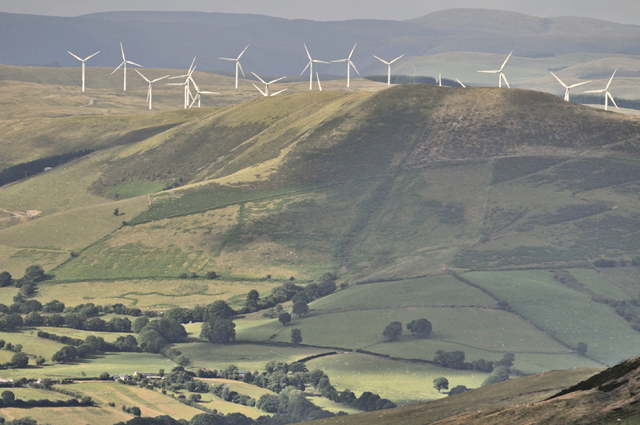
So to the weather. Late July saw the heatwave finally break down with thundery conditions becoming established, although we did not have any spectacular storms in our immediate area. Late one evening a canopy of undulatus clouds hung over the town, presaging the arrival of the rain....
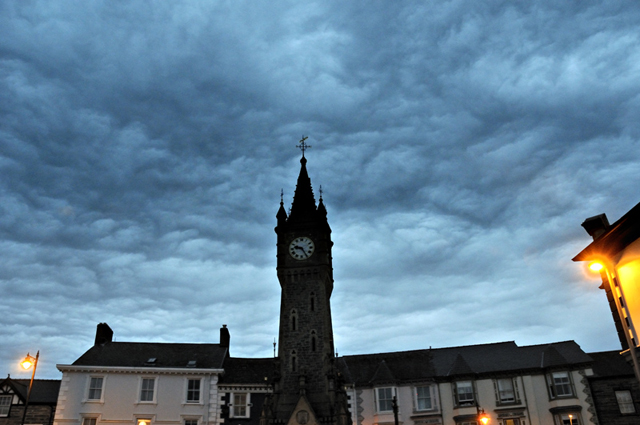
The weekend of July 27th-28th saw lines of heavy showers and thunderstorms rolling across the Cambrian Mountains, and I went to take a look as visibility was reasonable. I started off above Pennal, on the Happy Valley road, with a view from the SW round to the SE. It was clear that the active convection was ongoing over the hills to my south....
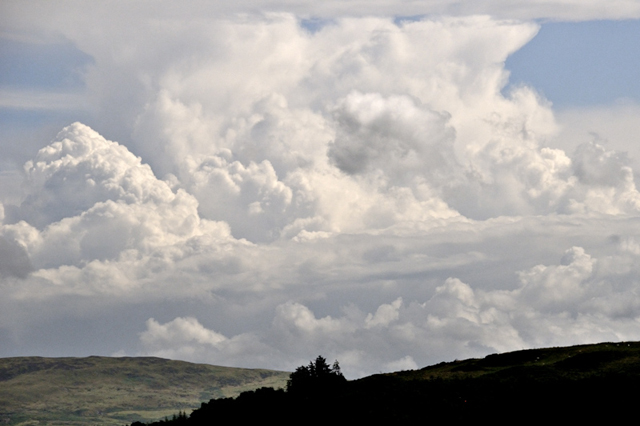
Here, a decaying storm (L) has mammatus on the underside of its anvil, whilst the top of another anvil (R) has hook-like Kelvin-Helmholtz wave-clouds forming along it and indicative of high wind-shear values. Unusual to get both in one image....
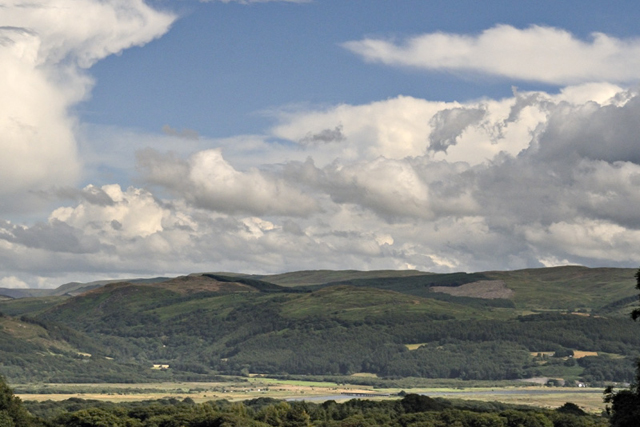
Deciding that it was time to get up close and personal with this line of storms I headed back into Machynlleth and up the Mountain Road towards Llanidloes, with developing convection rocketing upwards ahead of me and mature cells also dotted along the line.....
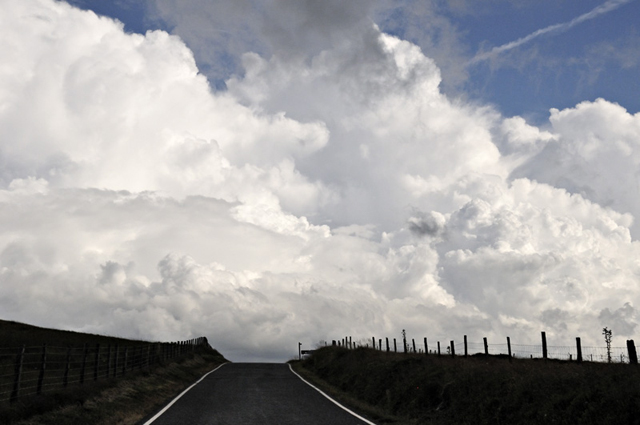
The storms were tending to develop, mature and decay quickly and as each cell rained itself out, it flung out its outflow-boundaries in all directions: in the image below the outflow-boundary is the low wall of cloud that stretches across the image. Although the decaying storm is moving R-L, the boundary is heading straight at me....
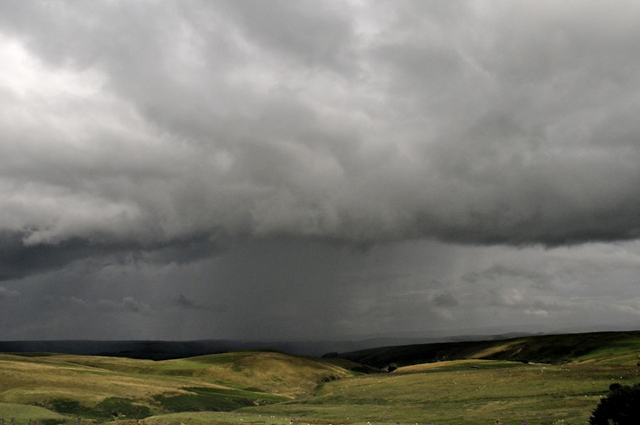
To my NE, crisp towers were going up over the Carno windfarm on Trannon: in the image below, the outflow boundary mentioned above is the grey murk ploughing in from the R. Outflow-boundaries act like little cold fronts, forcing warm air sharply upwards and either initiating convection or enhancing what has already started. These cells literally exploded into life producing a major storm which was, on its eastern side, producing lightning strikes. It, too, then collapsed and flung out its own outflow-boundary....
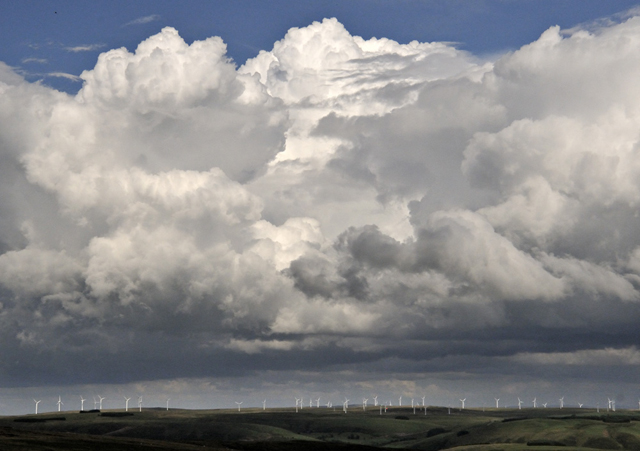
...and minutes later that was racing overhead. I let it pass and then headed back towards Machynlleth, alert for any potential drama about to unfold...
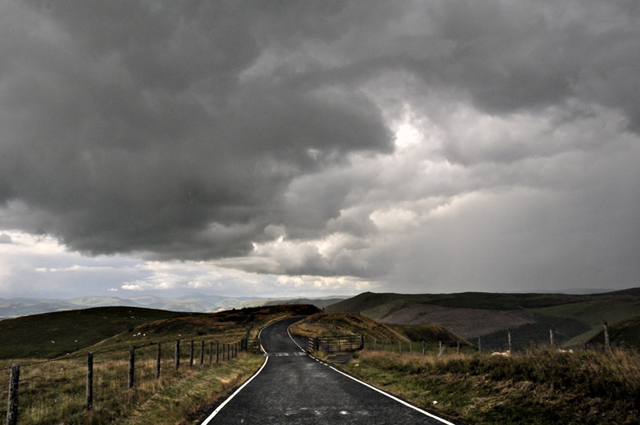
About a third of the way down with the boundary just in front of me I sensed that things might be coming together...
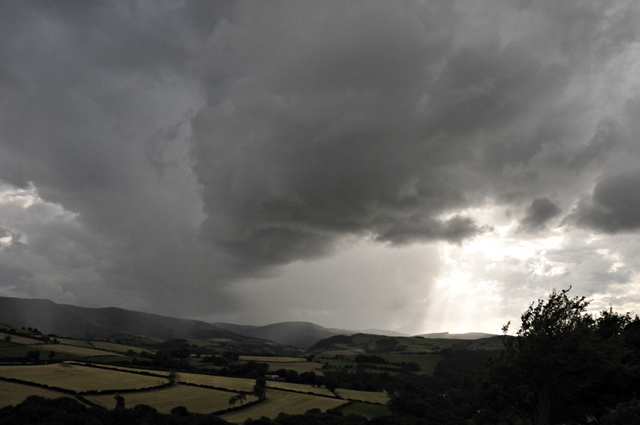
...and moments later I got this shot, which I was reasonably pleased with. A new cell has fired up and is starting to drop torrential rain, visible mid-way along the horizon.....
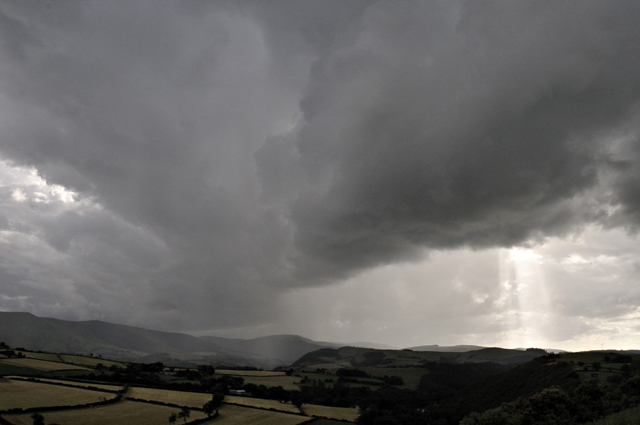
This deluge expanded very quickly so that when I got down into the valley, torrential rain greeted me....
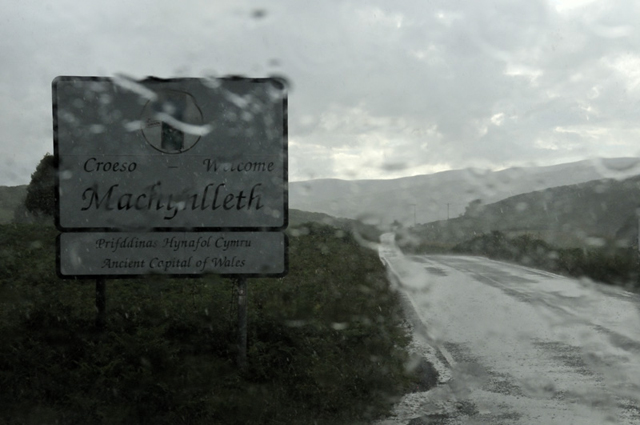
In town and it's bouncing off the road. This storm passed over, and just as I got home a bright flash of lightning over the hills to my immediate NE and a loud crash of echoing thunder made for a good finale!
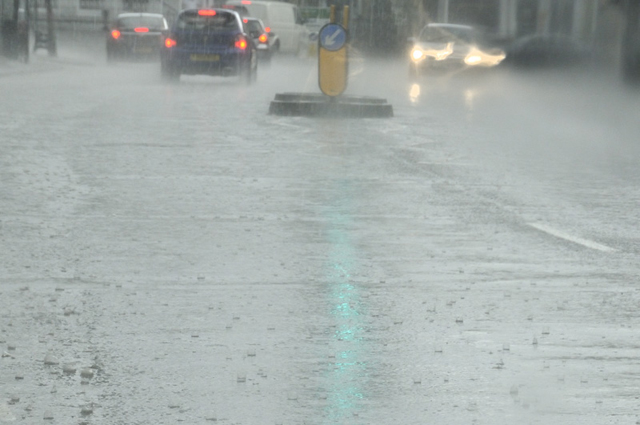
The night of August 15th-16th saw some very heavy rain as a moist airmass of tropical origin moved in over Wales. By the following daybreak, a bucket in the veg-garden, that twelve hours previously had been bone-dry, had 100mm of rainwater in it and 60mm plus was reported widely. Traffic chaos ensued as the Dyfi rose and burst its banks and a minor landslide near Corris led to the partial blockage of the A487. These shots were all taken from Y Wylfa, a hill just SW of Machynlleth....
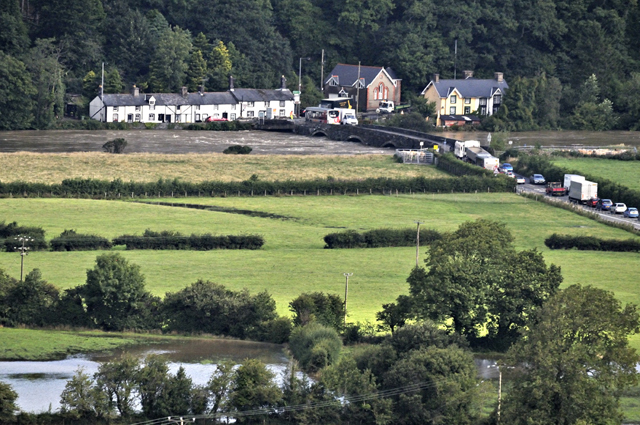
Looking downstream past Derwenlas...
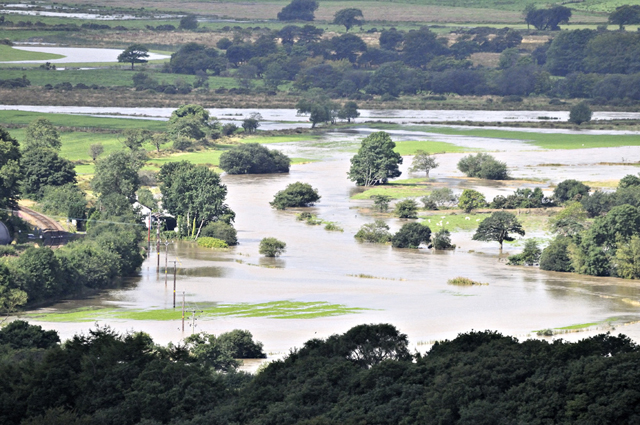
...and upstream to the part cut-off Millennium Bridge...
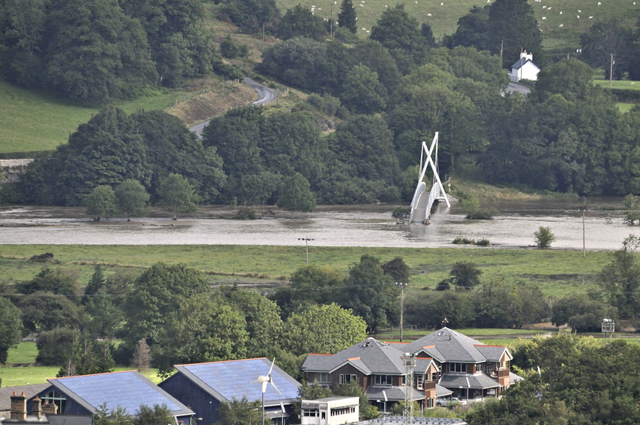
Unusual to see so many of the fields underwater like this in summer...
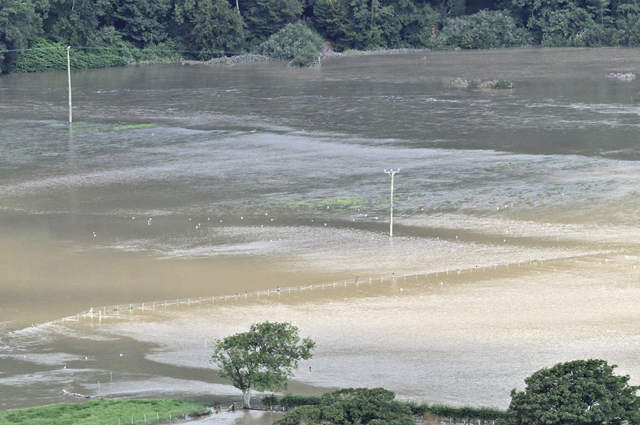
Those two trees again - they've appeared in a few of my winter flood-shoots!
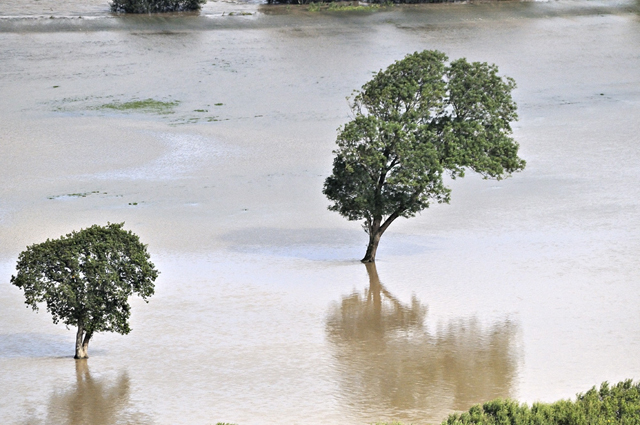
The floods went down quickly though and by the 20th the waters at Dyfi Bridge were good and clear once again. I got this flukey shot of a brown trout and some pond-skaters yesterday morning, which has inspired me to dig out my polarising filter for the next time I'm down there....
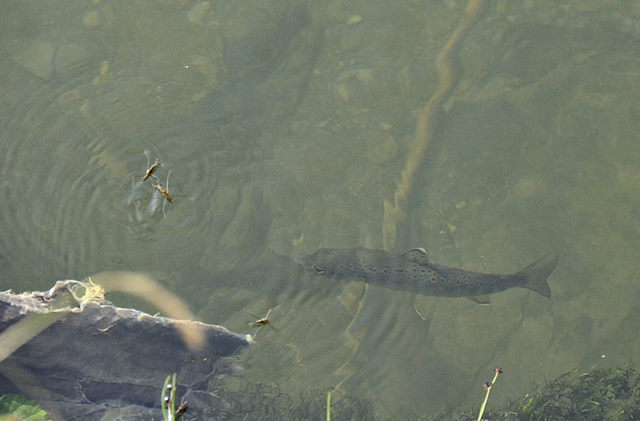
Early August also saw the first few chanterelles appearing, many hidden under the moss....
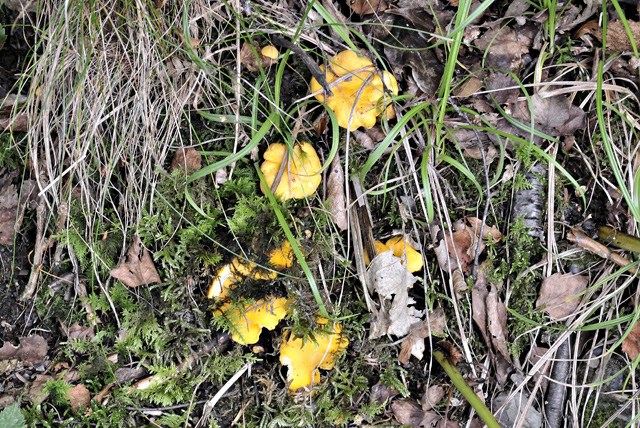
They are not abundant so far, but if you know where to look you can generally find enough for a good feed or two!
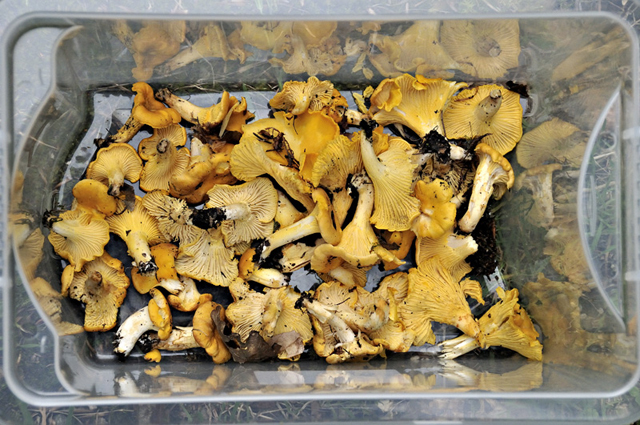
The perseverance with watering the veg-garden paid off with few losses. Plenty of wildlife there this year including a first - a common lizard that I found basking in the sunshine one afternoon....
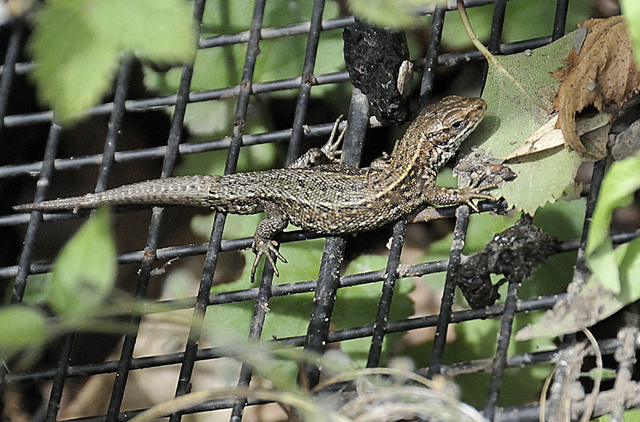
Cabbage whites are in abundance everywhere this year, but as I don't plant out any brassicas until early autumn they will have to make do with self-seeded nasturtiums again!
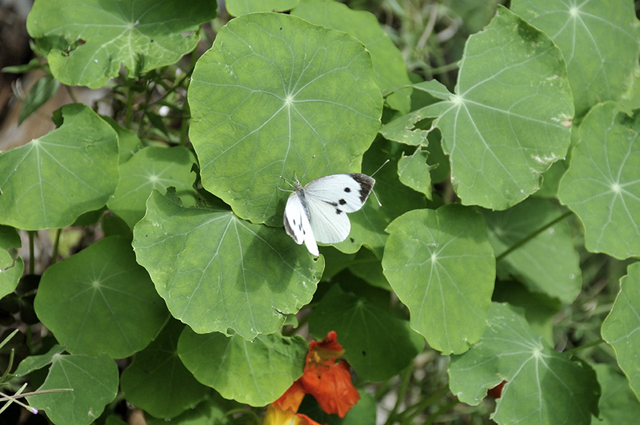
Other butterflies have been fewer than usual (apart from the dismal 2012): they have included a few peacocks, red admirals and commas - a welcome sight because I thought the very cold March might have wiped them out. They visit to feed on the large flowerheads of hemp agrimony....
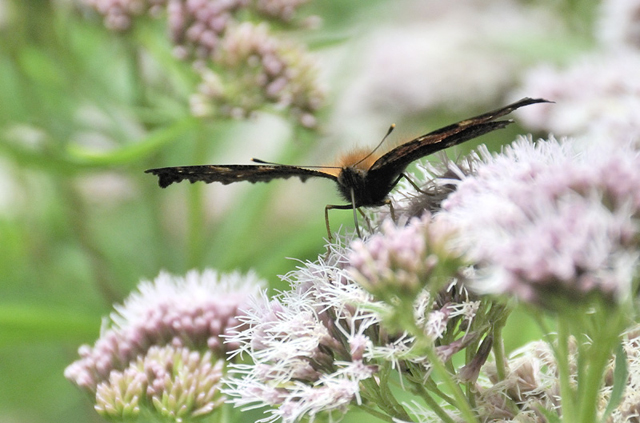
Couldn't quite get the angle I wanted with this one (stepladders would have been necessary) but was reasonably pleased with the shot....
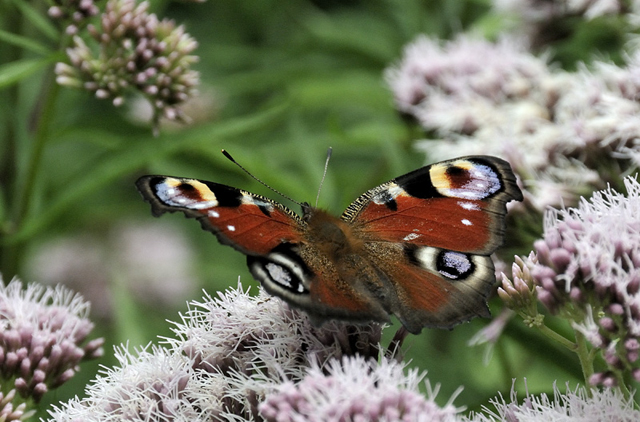
This year's success story has been down to deep-mulching some of the beds with seaweed last autumn. It feeds the soil, retains moisture and it is a generally excellent addition. These chard plants have grown to enormous (for me!) proportions with leaves so heavy they are breaking the stems off!
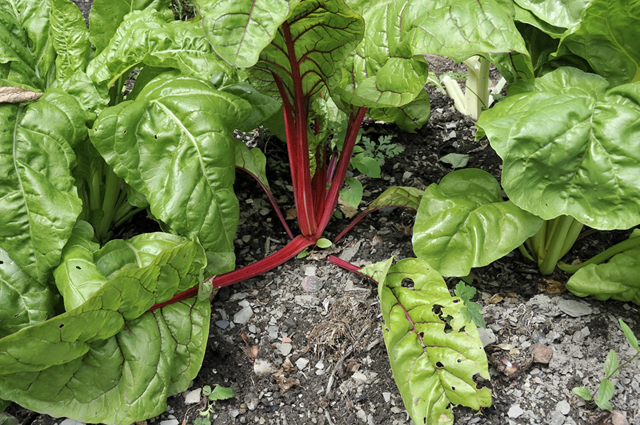
Mange-tout (variety: Oregon) is new for me but has done well with a good feed possible every 48 hours. It certainly likes the conditions here and I'll be growing it again....
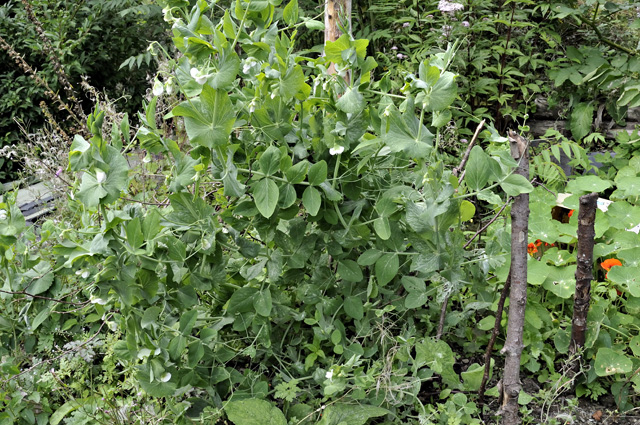
Yesterday a new mulch of seaweed was done, having cleared masses of it from the lifeboat slipway at Borth the day before....
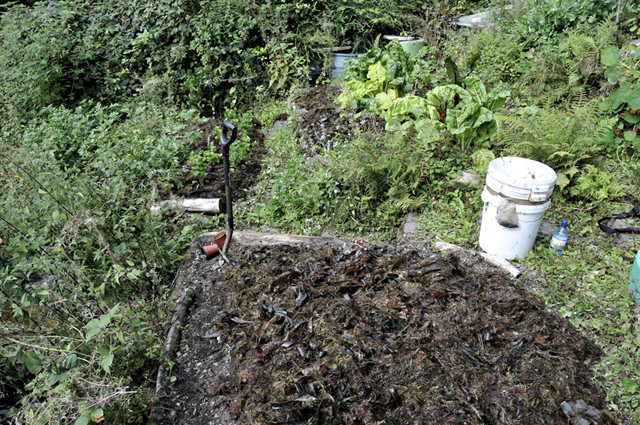
I put it around the chard too, taking care not to get it right up to the bases of the stems. It doesn't entirely stop the slugs but experience shows they are not keen on it. To the L in the image below are mulched celeriac plants - another new one for this year, with unknown results as it'll be many weeks to their harvest-time....
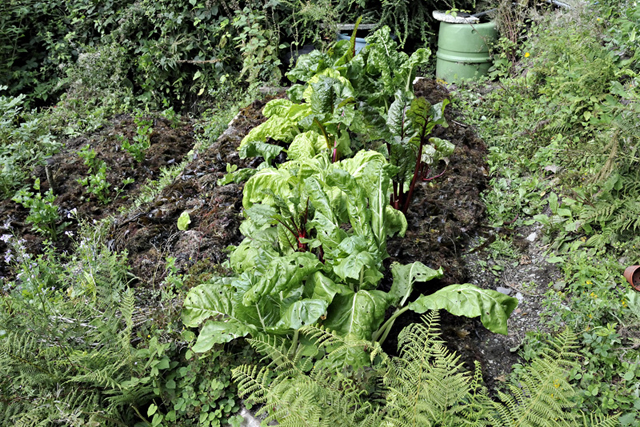
The shallots yielded OK, although a warmer spring would have improved matters. Broccoli seedlings were attacked by green moth caterpillars and a resowing looks to be necessary, whilst runner beans were a complete failure this year with poor germination and devastating slug-attacks combining to write them off. The mange-tout more than made up for that, though! More soon...
BACK TO WEATHER-BLOG MENU
New! Fine Art Prints & digital images for sale-
Welsh Weather & Dyfi Valley landscapes Slide-Library - Click HERE